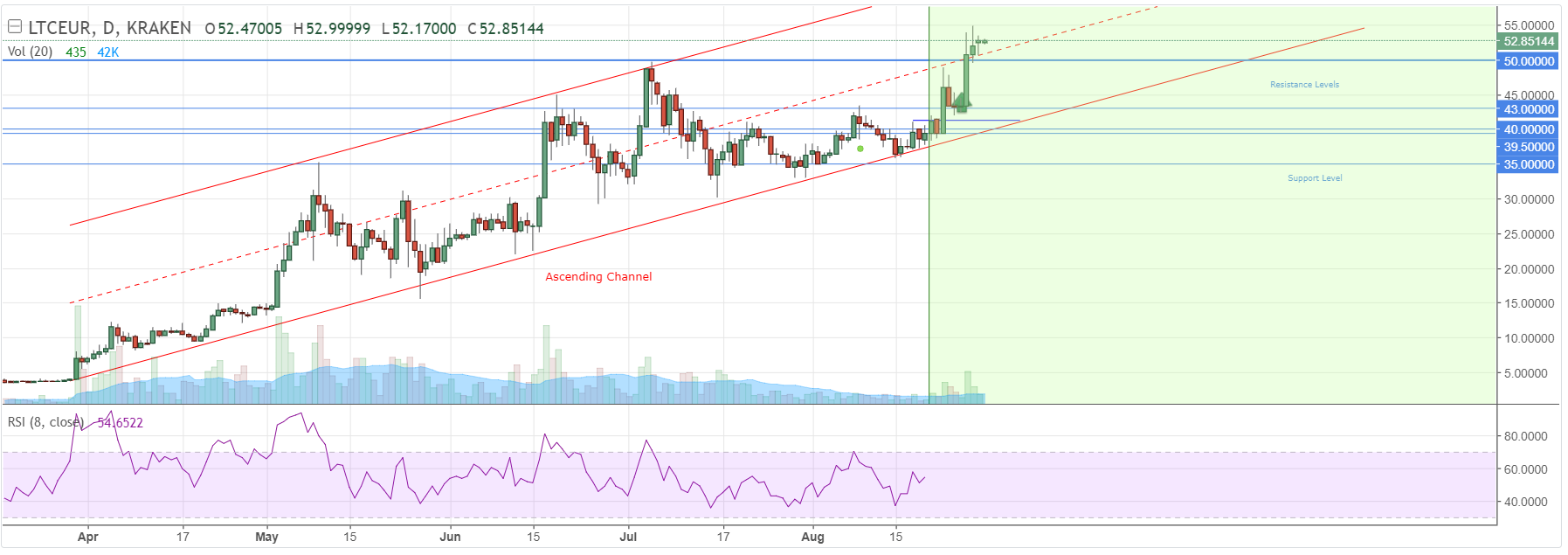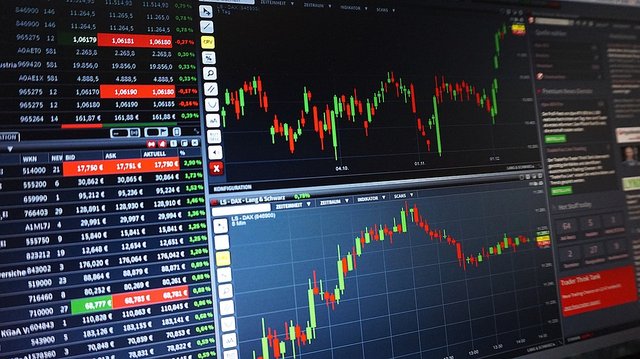Crypto - Improving trading beyond using Technical Analysis
Introduction – Cryptocurrency Markets
Cryptocurrency markets have exploded in popularity in 2017. 01-Jan-2017, the total cryptocurrency market capitalization was $17.6B and as of 02-Sep-17, this figure is hovering at $170B. Over a 10x increase for the ENTIRE market. Daily trading volume has exploded from $130M to upwards of $9B, a 69x increase.
What started with Bitcoin, a decentralized payment system to circumvent government manipulation of currencies, the crypto movement is quickly redefining “Money” as we know it. It has recently started to gain critical mass with investors, traders, entrepreneurs and consumers.
Young, volatile, borderless, and available 24/7 - cryptocurrency markets are a playground of inefficiencies. Crypto markets are still in their infancy and we are only starting to see an influx of institutional interest. This means that there are significant excess returns to be had for the opportunistic trader - especially when compared with other more traditional markets.
With this surge of new interest come new market participants. More and more traders are looking for a way to maximize their trading earnings. When scouring the internet for ways to successfully trade these markets, one inevitably encounters the two primary methods used to try to predict an asset’s future price, Fundamental Analysis and Technical Analysis:
- Fundamental Analysis (FA)
- Typically used for longer-term trading strategies, FA involves determining an asset’s true value based on its intrinsic properties or cash flow generation and also incorporating the overall state of the market environment.
- In younger markets, FA tends to have less relevance and prediction power in determining prices. Most FA valuation models are difficult to apply to assets with no cash flow and no comps.
- FA takes on a broader form of prediction and should be used to provide a framework or basis of value. I.e. does X blockchain have competitive or technological superiority to Y blockchain?
- Technical Analysis (TA)
- Technical analysis involves reading indicators and chart patterns to attempt to determine price trends. TA is not concerned with the company’s fundamentals, but is used to track/predict money flows and sentiment.
- Day traders typically use technical analysis almost exclusively and looks at past price action, patterns, and momentum indicators to determine future values.
- TA can also be used to help make longer term investment decisions.
What is Technical Analysis (TA)?
Technical analysis is a topic that no matter in which market it is applied (stocks, forex, crypto, etc), there are always polarized views – the trading front lines are filled with passionate haters of TA, as well as traders who swear by its use and use it to make a living. There will always be people that say it doesn’t work.
A commonly accepted view is that regardless of its validity, if enough people use TA to make investment decisions, then at a minimum it often becomes a “self-fulfilling prophecy” and therefore holds some amount of predictive power.
The key foundational principals of technical analysis are based on “The Dow Theory.” There are many articles that go into a lot of detail, so here are the key points:
- An asset’s (crypto in this case) current market price reflects all existing information, including the knowledge and expectations of all market participants. All existing, prior, and upcoming details have already been reflected in current asset prices. As a result, chartists/technicians (traders using TA) seek to interpret what the price is saying about market sentiment to make educated predictions about future pricing.
- Prices movements are not completely random. Instead, they frequently follow trends, which can be either short or longer term. Once an asset’s price forms a trend, it is more likely to follow that trend than move contrary to this trend. Through technical analysis, technicians seek to identify trends and profit from them.
- ‘What’ is more important than ‘Why’. There are innumerable factors could have caused a asset’s market price to move in a certain way, technicians take a more direct approach by analyzing supply and demand.
- History has a tendency to repeat itself and it is possible to predict market psychology. Traders often respond the same way when provided with similar stimuli. A good example of this in cryptocurrencies would be bullish price movements in response to news/events suggesting rising adoption or greater visibility.
As you can probably guess, all of these points are passionately disputed, and the dispute gets especially heated in such non-efficient markets like the cryptocurrency markets.
Types of Common Technical Analysis Indicators
There are myriad technical indicators that exist. Every trader has their own favorites, each swearing by their use in one way or another. What are some examples of TA indicators?
Trend Lines
At its core, trend lines are simple and are just lines that connect the highest-high points and the lowest-low points to allow a trader to identify the channel in which a security is trading. These trends can be upward (bullish), downward (bearish) or sideways. Trends can continue for varying lengths of time as well – short, intermediate, or long. The basics of an upward trend will be a series of higher highs and higher lows.
Resistance and support levels
As there are trend lines, there are also horizontal lines that express levels of support and resistance. A support level exists when an asset’s price is met by enough demand (buyers of the security) to stop the decline of the asset price. This will act as a ‘floor’ under which the security’s price will not fall. A resistance level is the opposite – a price level where demand is scarce and sellers will patiently wait with their orders, forming a large supply zone. When an asset’s price reaches a resistance level, sellers outnumber buyers and this price will act as a ‘ceiling’; the asset’s price will struggle to extend above this level of resistance.
Typically, if a security’s prices breaks through a price level that previously served as resistance, this price frequently ends up serving as a support level. Alternatively, the opposite could happen, with the security’s price falling below support, resulting in this level becoming a new resistance level.
A breakout is typically an indicator of strengthening of an existing trend; see the below example.

The above LTC/EUR shows a clear uptrend, as well as support & resistance lines.
Moving averages
A key concept for technical analysis is the use of moving averages. This allows traders to easily identify trends by smoothing out a security’s price fluctuations so market participants can get a better sense of where the price has been going. A moving average is based on the average price of the coin over a certain period of time. For example, a moving average of a given day will be calculated according to the price of the coin for each of the 20 trading days prior to that day. Connecting all moving averages forms a line.
The most common moving averages are Simple Moving Average (SMA), which is determined by calculating a security’s average price over a specific time period (e.g. 5 days), and Exponential Moving Average (EMA), a moving average that gives more weight in its calculation to the price values of the last few days than the previous days.
Reading and interpreting moving averages is somewhat of an art (as with all readings of technical analysis), but generally, if the shorter period moving average (e.g. 10 day moving average) crosses above a longer period moving average (e.g. 30 day moving average), it might tell us that a positive trend is coming (bullish), and vice versa.
Trading Volume
Trading volume always plays a very important role in identifying trends. Significant trends are accompanied by a high trading volume, while weak trends are accompanied by a low trading volume. When a security goes down it is advisable to check the volume which accompanied the decline. A long-term trend of healthy growth is accompanied by a high volume of increases and a low volume of declines. It is also important to see that volume is rising over time. If the volume is decreasing during price increases, the upward price trend is likely to come to an end, and vice versa during a downtrend. Volume also indicates the liquidity of a given asset; the importance of liquidity is often forgotten until it dries up, and then the lack of it is punishing.
A note on using TA...
There are many different Technical analysis indicators: Moving Averages, Moving average convergence divergence (MACD), Relative Strength Index (RSI), Commodity Channel Index (CCI), etc. – everyone has their favorites and each indicator will do its job in terms of calculations. All of these indicators are taking price and volume data and using this to attempt to predict future price movements. However, there is absolutely no "holy grail" single indicator or signal. Profiting using TA in trading is less about how individual trading indicators work, and rather more about how these indicators are used as part of a trading plan.
Why use Technical Analysis?
Although the recent increase of the cryptocurrencies’ market cap has been substantial, the market cap is still quite low compared to those of Forex or Equities. I believe that that this trend will not only continue, but will increase. With a such a volatile/smaller market, such as Crypto, non-institutional traders can have a greater impact on the market.
With the increased interest in the cryptocurrency markets comes an influx of many novice traders. These traders, often new to trading in general, flock to YouTube ‘experts’ on how to profit by trading. These searches often end up with learning the basics of TA.
New traders, with an combined rather large amount of capital enter the market trading on basic TA. This creates the self-fulfilling prophecy - breakouts occur when they should occur and support and resistance levels perform exactly as one would expect. This has allowed traders with basic TA skills to successfully day trade, and quite easily too.
In crypto, it does seem that BASIC TA seems to be very powerful, more so than more advanced indicators. I, like many others, believe this is due to the large number of traders who had found success trading using the basics and never moved on to more advanced indicators.
What are the issues with using TA?
I wholeheartedly believe that technical analysis can work if one applies it methodically, rigorously, and with limited emotional interference, which is difficult to do. TA is not perfect - predicting the future is impossible - however, technical analysis exists as a practical method that weighs past prices and that asset’s trading volume.
When considering entering a trade, I would not recommend that the trade is made solely based on technical analysis. I think that TA and Trend lines should supplement your trading strategy. TA will allow you to decide at what price point to enter a cryptocurrency, HOWEVER, this should only be asked after answering WHY you have decided entering the trade.
TA will arm a trader with the data to make educated guesses, however, receiving mixed indicators/signals is very common, and this is when you will need to look for even more indicators to solidify your decision. Many traders actually end up using too many indicators, which will lead to a higher chance of having mixed signals and make it difficult to determine a market direction. There is a delicate balance here.
At times, the cryptocurrency market seems to be unpredictable and unreasonable. Crypto market participants must remember that it is a very nascent market and there is a continuous influx of small and big money. Thinly traded cryptocurrencies, coupled with minimal regulation, make it very easy to manipulate the market. Although technical analysis can predict price action based on historical data, it cannot predict a human’s motivations and actions. If a whale (large capital from a wealthy person or organization) decides to move the market, no indicator or candlestick pattern will be able to give you a heads up. Unfortunately, that is the risk in these markets.
As with any market, there are many other factors driving price action. Not only are there fundamental factors that have a significant impact on the cryptocurrency market (e.g. regulations, ETF certificates, mining hash, etc.), but we often see significant impacts from sentiment changes in the market (e.g. positive/negative news about new partnerships, increased use, FOMO, FUD, etc.).
I believe an integral part of fundamental analysis in today’s markets is determining sentiment through big data. Gleaning trends and sentiment from the many social channels used in society gives valuable insight into potential money flows. My recommendation is to blend technical analysis and fundamental analysis to make sensible investment decisions. Positive fundamentals and the use of technical analysis to determine a good entry point will absolutely increase your trading profits.
So. Many. Cryptocurrencies.
Blockchain technology is a complete game-changer, and history has shown that investing in disruptive technologies at the very early stages can be extremely profitable. Armed with basic TA and being able to properly interpret other fundamentals a trader can outperform the market. However, there are so many cryptocurrencies.
As of 02-September-2017, there are 1,096 different cryptos that are traded in 5,416 markets. With the surge of Initial Coin Offerings (ICOs) in the past 6 months, the number of traded cryptocurrencies will keep rising.
This increase in the number of available cryptocurrencies has allowed for an unprecedented opportunity for traders, but it also makes it makes a trader’s job increasingly more complex to identify and monitor exceptional investment vehicles. Cryptocurrency market participants are overwhelmed by a very large and growing amount of data that needs to be digested and interpreted before making a buy or sell decision.
With the bloom of newly available cryptocurrencies, traders are spending more time than ever trying to find suitable investment opportunities among the sea of choices. Even with a well-designed investment approach, the sheer quantity of information and available options to watch makes this job nearly impossible to do alone.
As this market develops, more complicated TA tools will be needed in order to continue to outperform. When tracking multiple cryptocurrencies and multiple indicators on each pair, it will be become very difficult to catch the most valuable opportunities in their early stages.
TA, numerous Cryptos, news - How to successfully trade it!
Thousands of alt-coins price movements across multiple exchanges is just the initial torrent of data users must ingest to effectively trade cryptocurrencies. The most experienced traders rely on a host of services to help them derive insights from the slew of market indicators popping up constantly.
We have recognized the need to develop an intelligent tool to help monitor all the data that is available in the cryptocurrency markets, and thus have created Intelligent Trading Technologies (ITT) to do all the heavy lifting and truly add value to the crypto trader’s arsenal.
The goal of Intelligent Trading Technologies is to empower traders with consolidated cryptocurrency market predictors served by our fleet of AI-powered data bots orchestrated to produce intelligent insights from a vast world of real-time data. We want to empower every beginner trader with consolidated insights on when to buy, sell, or hold their diverse portfolio of coins. Intelligent insights means using deep learning and statistical analysis to communicate a “why” behind each market predictor.
ITT employs state-of-the-art data science tools and neural networks to provide actionable real-time trading signals for success in the cryptocurrency markets. These disruptive technologies are constantly and consistently changing our lives. It’s time to leverage these technologies into cryptocurrencies.
ITT trading bots can be customized to cater to your preferences for time of day, trading volumes, risk level, preferred trading frequency, just to name a few. ITT assists all traders, beginners to experts, by monitoring all the relevant information, 24/7, on your behalf. ITT will then send you actionable trading alerts during the day in time for you make the final call whether to trade.
Our intelligent bot (Tier 2, scheduled to be released 4Q17) will be capable of self-programming and reprogramming to match changes in the market, adjusting indicator weights, and continuous optimization as an agent motivated solely on maximizing the traders hourly return rate.
The ITT team is made up of professionals in artificial intelligence, asset management, capital markets trading, algorithmic trading, quantitative finance, and software development – all coming together to deploy this new state-of-the-art platform.
Token Sale details
The ITT Token sale is currently underway, raising 45% of our $4.2mm cap in the first 2 weeks of the sale.
- Start Date: 18-August-2017
- End Date: 17-September-2017
- Cap: $4.2MM denominated in ETH/BTC
- Tokens: “ITT”, ERC-20, Ethereum Blockchain
- 21,000,000 Tokens created. 75% available during the Token Sale.
The ITT team will use the token sale funds to further improve our trading alert platform, rolling out new and exclusive bots only available via the ITT Platform with subscriptions payments payable using ITT tokens.
ITT’s Platform is the ultimate trading assistant using artificial intelligence to cut through the noise and distill cryptocurrencies’ relevant data into actionable trading ideas for your execution. Don’t get overwhelmed by the information available and check out Intelligent Trading Technologies today.
Join the Conversation!
Website: http://intelligenttrading.org/
Token Sale Site: http://token-sale.intelligenttrading.org/
Facebook: https://www.facebook.com/ITT.Token
Twitter: https://twitter.com/ITT_Token
Slack (join): https://itt-token-slack.herokuapp.com/
Slack (team): https://itt-token.slack.com
Github: https://github.com/intelligenttrading
Reddit: https://www.reddit.com/r/ITT_Token/


Great. Thanks for sharing. I vote for you and begin to follow you. And Resteemed...
Interesting 101 on FA & TA. Personally I find that the problem with TA in such a low valuation market (compared to, say, forex) is that a single whale can crush things nastily, and can also easily influence through signals. Will follow your ICO to see how it's going : )
Completely agree with you. Difficult to predict and prevent in these markets, that is for sure.
Very interested
I think your FA will give deep onion the green light.
Deep onion is having a 40 week airdrop for those of you that have a bitcoin talk account. It's fully anonymous and designed to run thru the tor network. The Dev team and marketing strategy are on another level with a full team of friendly moderators ready to answer any questions at a moments notice. With it's unique distribution It's a great long term hold with zero financial risk. If you don't have a bitcoin talk account you can put that miner to work or pick some up at novaexchange and stake them for interest. To apply you just need your Bitcoin talk ID number and a Deep onion wallet.
https://deeponion.org/apply.php?ref=251926
good post my friend. gave you a follow
Lucas

Malabarize-se
Exchange YoBit pays its investors 6% per month.
To do this, simply go to the INVESTBOX section and select the crypto currency
check in http://bit.ly/yobitru